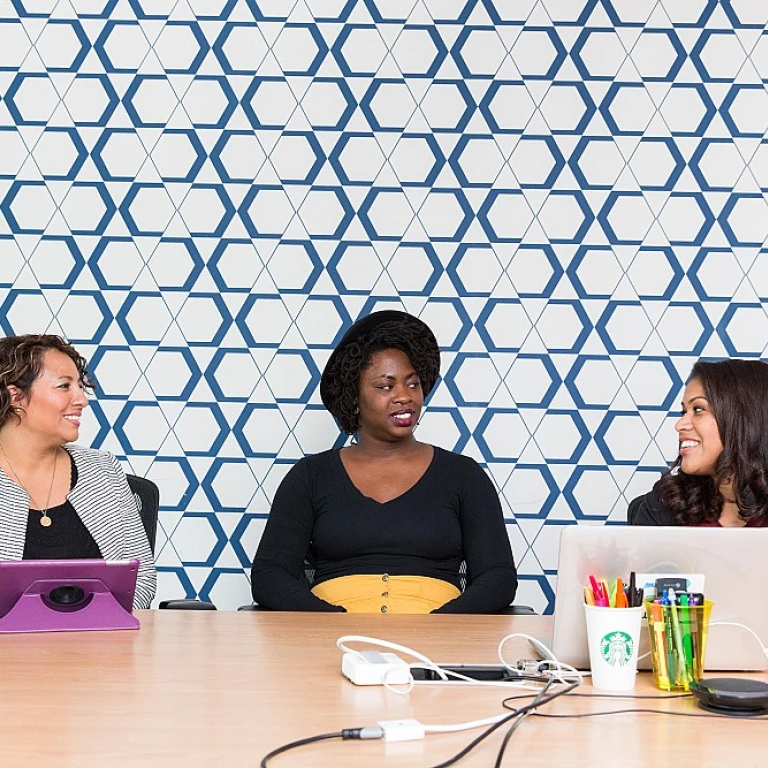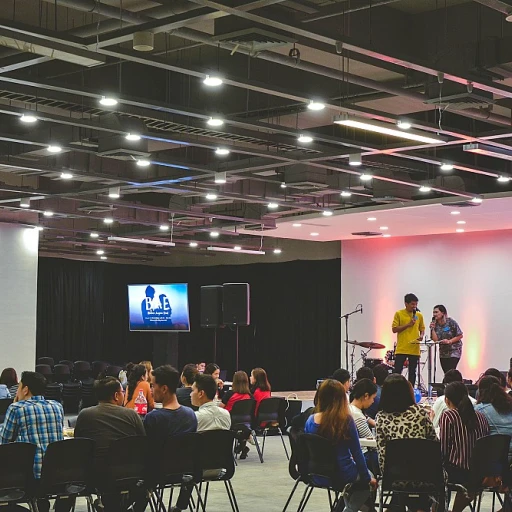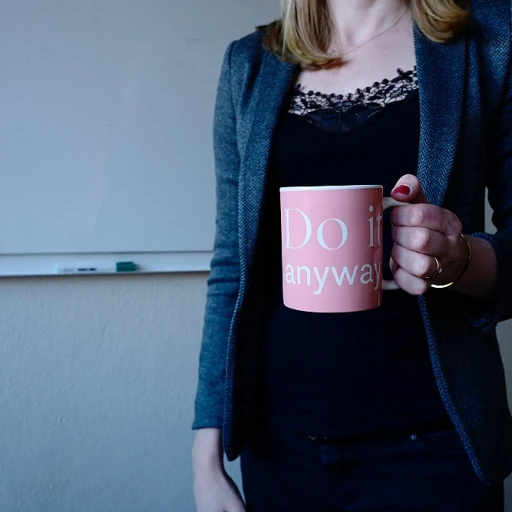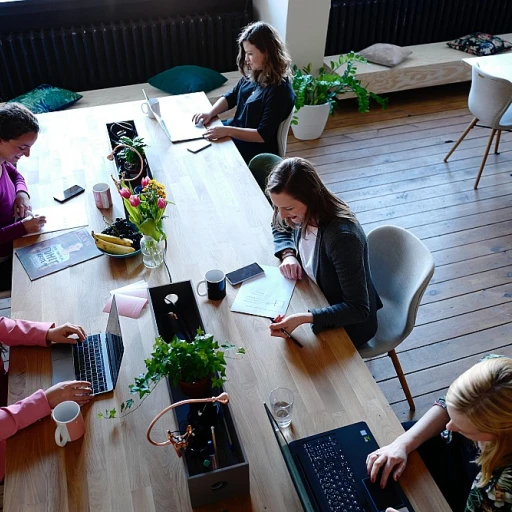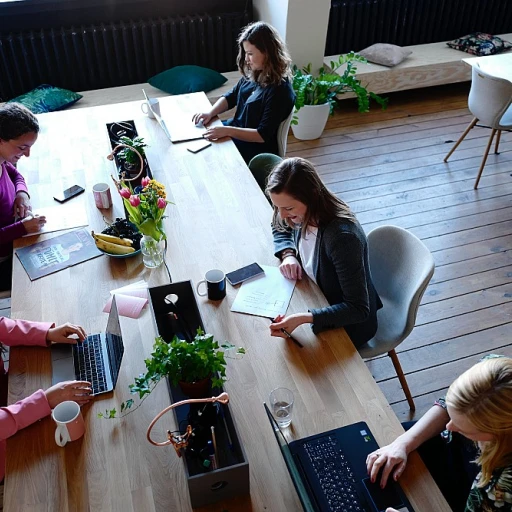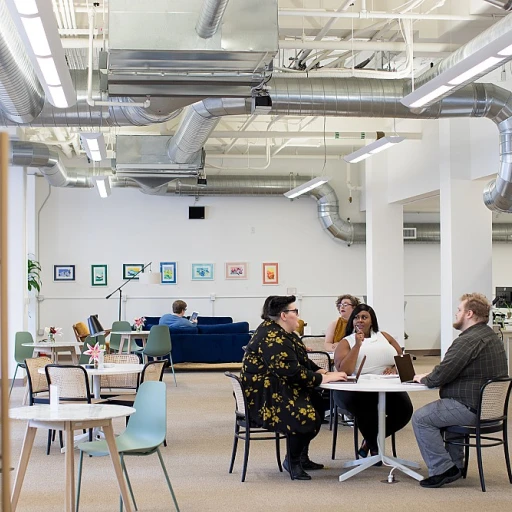
Understanding the Shift in Workplace Styles
A Journey from Traditional to Tomorrow's Workplaces
Modern work environments are evolving rapidly, moving away from traditional office setups. This shift reflects changing work styles that embrace diversity and individuality. It's essential for companies to understand these shifts in order to create a workplace style that aligns with contemporary employee expectations and enhances productivity. Today's work environments often prioritize flexibility, fostering a variety of work styles that cater to idea-oriented, detail-oriented, and logically-inclined individuals. This approach supports different communication styles, ranging from supportive to passive-aggressive, granting team members the space to thrive in roles that best suit their strengths. Embracing these diverse work styles can lead to improved problem-solving and more effective decision-making. Organizations are increasingly adopting innovative office layouts. These spaces are designed to promote collaboration and creativity, allowing employees to tackle tasks more efficiently. Such environments also help team members connect, facilitating better communication and reducing misunderstanding between different working styles. Should you wish to explore more on how to tackle toxic work environments, navigating the challenges of a toxic work environment may provide valuable insights. Overall, the transition to modern workplace styles is about embracing an understanding working environment that adapts to the diverse needs of employees. This shift not only enhances productivity but also contributes significantly to employee satisfaction and well-being.The Role of Flexibility in Modern Work Environments
Embracing Flexible Approaches
In today's rapidly evolving work environment, flexibility has become a cornerstone of modern workplace styles. Businesses are increasingly recognizing the diverse needs of their workforce and are shifting towards work environments that prioritize understanding and accommodating these needs. Flexibility doesn't just pertain to where people work but also encompasses the variety of work styles individuals exhibit in completing tasks and projects.
Different work styles are now acknowledged as valuable contributors to a team's success. For example, while one team member might be detail oriented, excelling in tasks that require meticulous scrutiny, another might have a more idea oriented approach, thriving in creative brainstorming and innovative problem solving. Both are essential in a balanced work environment.
When companies incorporate supportive work environments that recognize diverse communication styles, they create spaces where employees feel comfortable expressing their ideas, regardless of whether they have a more passive or aggressive communication style. This recognition contributes to more effective teamwork and enhances employee satisfaction.
A flexible approach is not just about being responsive to different communication styles; it's also about adaptive management that accommodates different working styles. In this context, team members have the autonomy to choose how and where they work best, which often leads to better outcomes tailored to logical work demands and individual preferences.
By integrating these flexible strategies into the workplace, organizations are not only fostering agile teams capable of effective decision making, but they are also promoting a culture of inclusivity and engagement. Learn more about how cultivating a supportive work culture can benefit your organization and employees alike.
Designing Spaces for Collaboration and Innovation
Spaces that Foster Collaborative Thinking and Innovation
Designing spaces that enhance collaboration and innovation is essential to how work environments evolve. With a focus on creating supportive spaces, companies are encouraging idea-oriented communication across diverse teams. This transformation is not just about redesigning physical areas, but about reshaping work styles to enable innovation and creativity among team members. In modern settings, there's a shift towards environments that accommodate different working styles. This often involves creating zones within the workplace that cater to various tasks and needs, allowing for passive and active engagement based on the employees' preferences. Think of it as a melting pot, where logical work meets creativity, enabling both detail-oriented and big-picture thinkers to thrive together. For teams to function seamlessly, understanding working and communication styles becomes crucial. Whether it’s task-oriented work or free-flowing idea exchanges, spaces must be versatile enough to adapt. This approach helps in reducing passive-aggressive work environments by promoting supportive and transparent communication styles. Importantly, empowering teams with spaces that encourage exchange can foster a culture of problem-solving and collaborative decision-making, leading to greater innovation. It sets a precedent for acknowledging the various work styles of team members, allowing individuals to express their unique ideas in a manner that is both constructive and engaging. Moreover, companies prioritizing these collaborative spaces often witness enhanced productivity and job satisfaction among employees. As workplaces become more inclusive and adapted to different styles, the integration of unique partnerships for employee benefits becomes increasingly relevant, ultimately driving the evolution of modern workplaces.The Impact of Workplace Styles on Employee Well-being
Influence of Diverse Workplace Styles on Employee Health
In the ever-evolving work environment, understanding working styles significantly enhances employee well-being. Balancing numerous styles, from idea-oriented teams to detail-oriented tasks, can impact both mental and physical health.
Communication plays a vital role here. Different communication styles—be it passive, aggressive, or supportive—affect the way team members interact, potentially influencing stress levels. Effective communication style management helps to maintain a harmonious and healthy workplace.
An empathetic approach towards diverse working styles, including supportive work settings and problem-solving oriented individuals, promotes a logical work environment. Encouraging a culture where diverse work styles are appreciated fosters well-being and supports decision-making processes.
It is essential for employers to cultivate an environment where diverse styles are recognized and leveraged. By promoting understanding and adapting to various work styles, companies not only enhance productivity but also ensure the well-being of their employees.
Integrating Diversity and Inclusion into Workplace Styles
Encouraging an Inclusive and Diverse Workspace
In the modern workplace, integrating diversity and inclusion into varied work styles is tantamount to fostering an environment where every employee, irrespective of their background, can thrive. This cultural shift in work environments emphasizes embracing different work and communication styles, allowing team members to engage authentically and productively. The successes of a team often hinge on problem-solving capabilities that take advantage of diverse perspectives. By acknowledging the uniqueness of each team member, employers can encourage a spectrum of approaches to decision making. Some individuals might be more detail-oriented or idea-oriented, while others prefer a logical or innovative approach. Recognizing these differences in work styles not only improves productivity but also enhances team cohesion. Workplaces that integrate diverse styles promote effective communication, whether it be supportive, passive, or even aggressive to an extent. The emphasis here is on fostering a communicative environment where understanding takes precedence. Encouraging an atmosphere that values diverse styles can transform how tasks are approached, contributing significantly to project outcomes and overall team dynamics. A supportive work environment takes into account the unique working styles of its employees. This recognition allows for flexible approaches in task management, where communication styles are respected and adjusted for collective harmony and effective collaboration. By fostering an environment that values diverse communication styles, organizations can enhance the relationship between team members, fostering a more harmonious and productive workplace. Integrating diversity and inclusion into workplace styles requires continuous effort and understanding working with inclusivity in mind. Employers should strive to build work environments where oriented individuals, whether detail-oriented or idea-oriented, can express themselves without restraint. By providing an inclusive platform, organizations can nurture a culture that not only accepts but thrives on diversity.Future Trends in Workplace Styles
Anticipating the Future of Workplace Styles
The evolution of workplace styles is an ongoing process influenced by technological advancements, societal shifts, and a growing understanding of what fosters productive work environments. As we look ahead, several trends are likely to shape how organizations design their spaces and approach work.- Technology Integration: As technology continues to evolve, we’ll see increased integration of virtual reality and collaborative tools, enhancing communication styles among team members. This tech-driven push will allow for more flexible working styles, accommodating both detail-oriented individuals and idea-oriented teams.
- Hybrid Work Models: The rise of hybrid work models will persist, blending in-office and remote work to cater to different work styles. This approach supports employees who thrive in structured, logical work environments and those who excel in more passive work settings from home. Understanding working dynamics within these hybrid setups will be paramount.
- Personalized Workspaces: Future workplace styles will favor personalization, allowing team members to tailor their environments to suit individual work styles. Whether an employee is more aggressive in their project tasks or leans towards supportive work roles, individualized spaces will become essential for fostering innovation.
- Focus on Well-being and Inclusivity: Following the conversations about employee well-being, organizations will prioritize creating spaces that support mental health and inclusivity. Integrating supportive and diverse work environments could enhance team cohesion and mitigate passive-aggressive behaviors among staff.
- Circular Design Concepts: Sustainability will take center stage, with more workplaces adopting eco-friendly designs that promote a logical and responsible approach to resources. This shift encourages a problem-solving mindset among employees, aligning with broader corporate responsibility goals.

